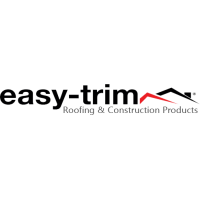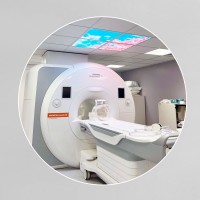Your Guide to Green Roofs
by Mark Row
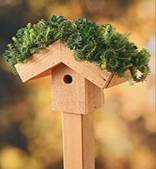 All You Wanted to Know about Green Roofs
All You Wanted to Know about Green Roofs
Although not uncommon, green roofs are becoming more and more popular over the years due to their insulation performance and numerous environmental and economic benefits, but also their interesting look and Hobbit style design. Their rapid development and broad application is mainly caused by increasing deficit of green surfaces in urban surroundings which can (and does) have many harmful consequences. Well, so called eco-roofs, will not only do yourself and your home some good, but also do something for the environment.
Green roof definition
A green roof is basically a roof with grown vegetation and established wildlife habitats. It is constructed from few separate layers. The vegetation layer depends on the roof type (is it an extensive or intensive) and the depth of the growing (planting) medium, but can consist of almost any plant only limited by maintenance, structure and climate. The growing medium includes nutrient reserves, weight, air volume, water retention and grain size and it is usually made of expanded clay (perlite) which is more absorbent and less dense than minerals. A thin fabric filter layer is usually placed between the drainage and growing medium layer, used to protect the planting medium and allow water flow.
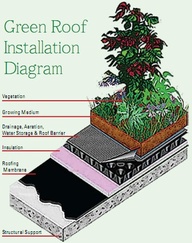
Roof Structure Consists of Different Layers
Drainage layer is multifunctional since besides protecting the below root proof layer, it also retains water drained off the roof thus providing air and water for the substrate. Protective layer is added to protect the roof membrane from damage and fertilizers, usually consisted of rigid or sheet insulation, copper foil, concrete or thick plastic. Although certain green roof systems are insulated enough, additional insulation may be prescribed by applicable building regulations. The waterproofing layer is a membrane, commonly single-ply membrane as simple and very cost effective.
Finally, certain systems include passive irrigations where the water is stored in the drainage layer and used to supply the growing medium with water while the excess amounts are allowed to drain off. Note that green roof systems do not necessary include all the describes components but usually combine certain ones in order of reducing the weight and the cost.
Green roof classification
Now, there are two basic types of green roofs – extensive and intensive. Extensive ones are usually consisted of minimal growing medium of 50 to 150 mm height, with not more than one or two plant species (moss, herbs, grass), but also very lightweight, easy to install and maintain and especially suitable for larger areas. There are also certain classification within this category, so construction industry differs extensive from lightweight, super lightweight and biodiverse extensive roofs which support certain species (or group of species) growth.
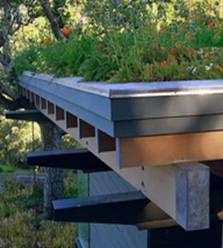
Biodiverse Sky Garden
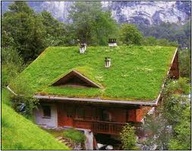 Intensive ones, on the other hand, have higher planting medium (150 to 1500 mm) which allows much greater biodiversity, including shrubs, edible plants, lawns to smaller trees, but also set certain structural requirements and reinforcements due to the system weight. They are commonly used for natural gardens or growing food. There are also some subcategories here like intensive, semi-intensive roofs and roof gardens. They are somewhat more demanding than extensive ones regarding their installation and maintenance, include irrigation, but also have great insulation properties.
Intensive ones, on the other hand, have higher planting medium (150 to 1500 mm) which allows much greater biodiversity, including shrubs, edible plants, lawns to smaller trees, but also set certain structural requirements and reinforcements due to the system weight. They are commonly used for natural gardens or growing food. There are also some subcategories here like intensive, semi-intensive roofs and roof gardens. They are somewhat more demanding than extensive ones regarding their installation and maintenance, include irrigation, but also have great insulation properties.
When opting for any of the named green roof type, there are a few things to consider. The first thing is the access. Know that extensive roofs require less maintenance than intensive ones, but still even with extensive roofs you will need to remove excess vegetation and clean the gutters at least once a year, so plan your access regardless of the type you go for. This may include inside hatches or secure ladders. Another thing to keep in mind is the fire risk. Although it is not likely for the vegetation to be caught in a fire, there is some risk so certain precautions should be taken including placing vegetation barriers like concrete or pebble paving. Try to limit the number of downpipe outlets to not more than two per roof and properly protect them in order of preventing plant intrusion. Always make sure that the roof offers enough support for the vegetation, so your roof construction will need to be reinforced with concrete or steel constructions for intensive green roofs as heavier ones. Finally, there is the question of design, so it would be wise to maybe consult an ecologist prior to planting in order of receiving relevant information on plant species requirements, also keeping in mind that biodiversity may alter not only the appearance but also the performance of the roof.
What are the benefits?
As you have probably concluded yourself there are many upsides to having a green roof system. Some key benefits include:
- Higher retention of water, since it reduces water runoff.
- It prolongs the life of your roof, doubling or even tripling waterproofing membranes durability, protecting it from temperature changes and harmful UV radiation.
-
 These systems can also significantly contribute to your home thermal performance, keeping the energy consumption and your electricity bills down low. This also has positive effect on the environment since lower energy consumption leads to lower CO2 emissions and reduced climate change.
These systems can also significantly contribute to your home thermal performance, keeping the energy consumption and your electricity bills down low. This also has positive effect on the environment since lower energy consumption leads to lower CO2 emissions and reduced climate change. - Another problem to deal with is the so called urban heat island effect which basically shows the difference in urban and surrounding rural areas temperatures, where temperature in urban areas can be up to 4°C higher than in rural ones. Green roofs can reduce this disproportions since they reflect more sunlight and insulate the layers below, keeping it cooler during the summer.
- Vegetation also works as a noise barrier, reducing its transmission through the roof.
- Finally, the visual and aesthetic impact should also not be disregarded.
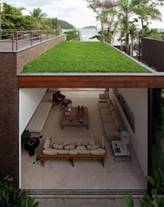
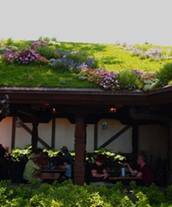
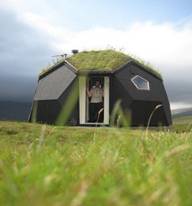
Finally, if everything previously stated got you intrigued, you could enjoy some more interesting green roofs looks and designs in the video below.
If you have more questions about Vegetated Roofs, feel free to post them in the comments section below. I will be more than happy to answer any questions you might have.




























